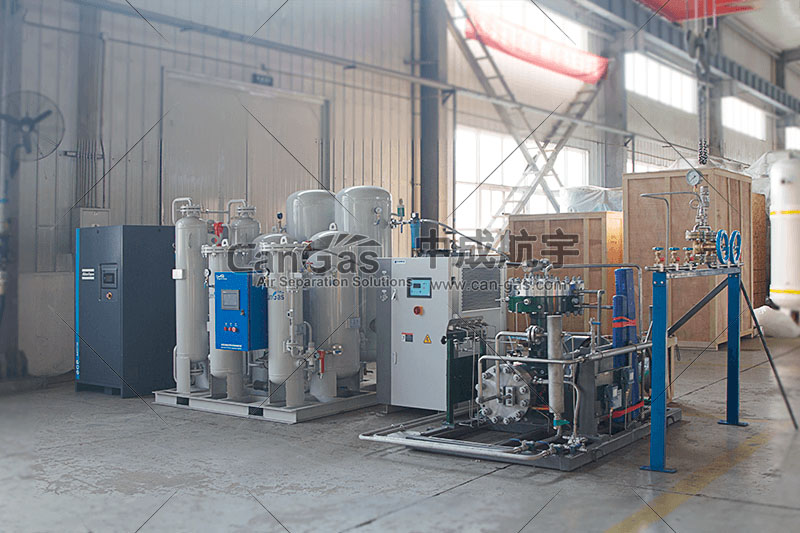PSA nitrogen generator working principle
The pressure swing adsorption (PSA) nitrogen generator uses carbon molecular sieve as the adsorbent, and applies the principle of pressure adsorption and decompression desorption to adsorb oxygen from the air to separate nitrogen. The separation of O2 and N2 by carbon molecular sieve is based on the difference in the kinetic diameter of the two gas molecules and the difference in the diffusion rate. The adsorption capacity of O2 is much larger than the adsorption capacity of N2. Pressure swing adsorption nitrogen production uses the adsorption characteristics of carbon molecular sieve, adopts the cycle of pressure adsorption and decompression desorption, so that compressed air enters two adsorption towers alternately (can also be completed by a single adsorption tower) to achieve air separation, thus continuous production. Produces high-purity product nitrogen.
PSA nitrogen generator process flow
After being compressed by the air compressor, the air enters the air storage tank after dust removal, oil removal and drying. It enters the left adsorption tower through the air inlet valve and the left suction inlet valve. The pressure of the tower rises, and the oxygen molecules in the compressed air are adsorbed by the carbon molecular sieve. , the unadsorbed nitrogen passes through the adsorption bed and enters the nitrogen storage tank through the left suction outlet valve and nitrogen output valve. This process is called left adsorption, and the duration is tens of seconds. After the left adsorption process is over, the left adsorption tower and the right adsorption tower are connected through the upper and lower pressure equalizing valves, so that the pressures of the two towers are equalized. This process is called equalizing pressure, and the duration is 2-3 seconds. After the pressure equalization is completed, the compressed air enters the right adsorption tower through the air intake valve and the right intake valve, the oxygen molecules in the compressed air are adsorbed by the carbon molecular sieve, and the enriched nitrogen enters the nitrogen storage through the right outlet valve and the nitrogen gas production valve. This process is called right adsorption and lasts for 60 seconds. At the same time, the oxygen adsorbed by the carbon molecular sieve in the left adsorption tower is depressurized and released back to the atmosphere through the left exhaust valve. This process is called desorption. On the contrary, when the left column is adsorbing, the right column is also desorbing at the same time. In order to completely discharge the oxygen released from the depressurization in the molecular sieve to the atmosphere, nitrogen is used to purge the desorbing adsorption tower through a normally open back-flushing valve, and the oxygen in the tower is blown out of the adsorption tower. This process is called backflushing. It is time-consuming with desorption. After the right adsorption is completed, it enters the pressure equalization process, and then switches to the left adsorption process, and the cycle continues.


